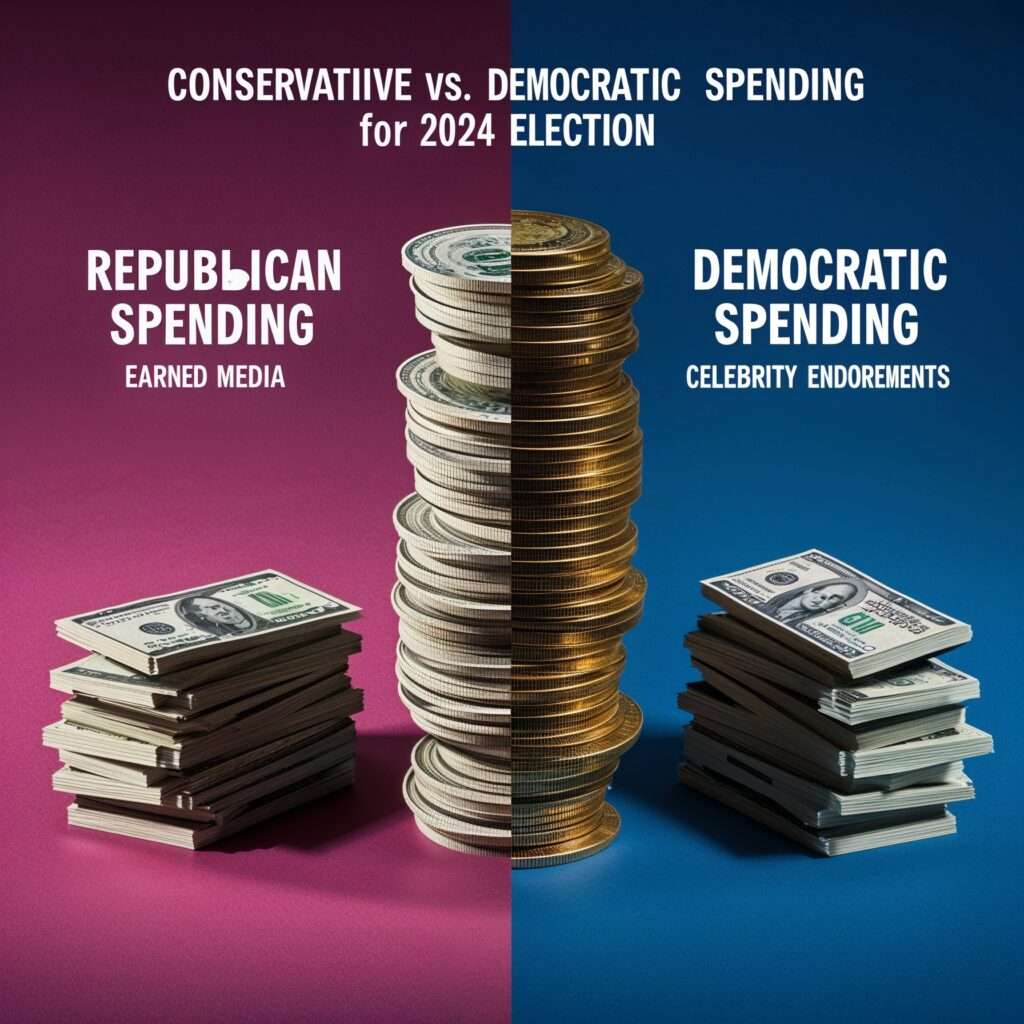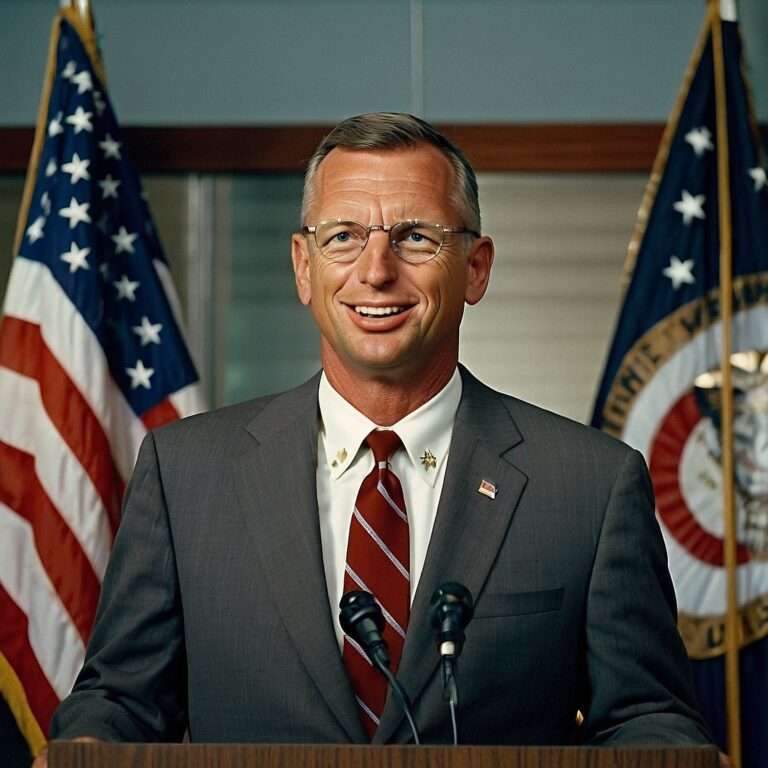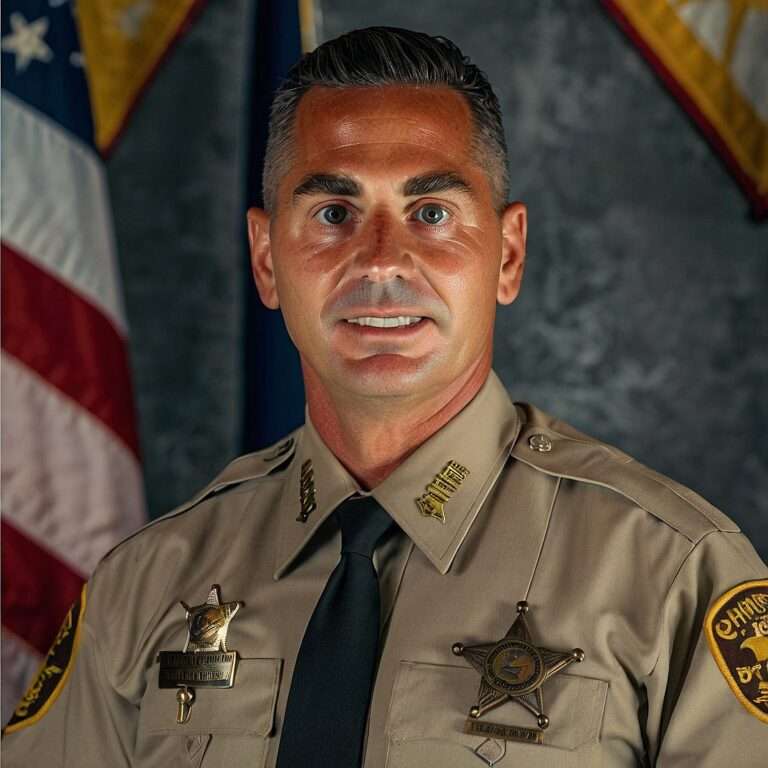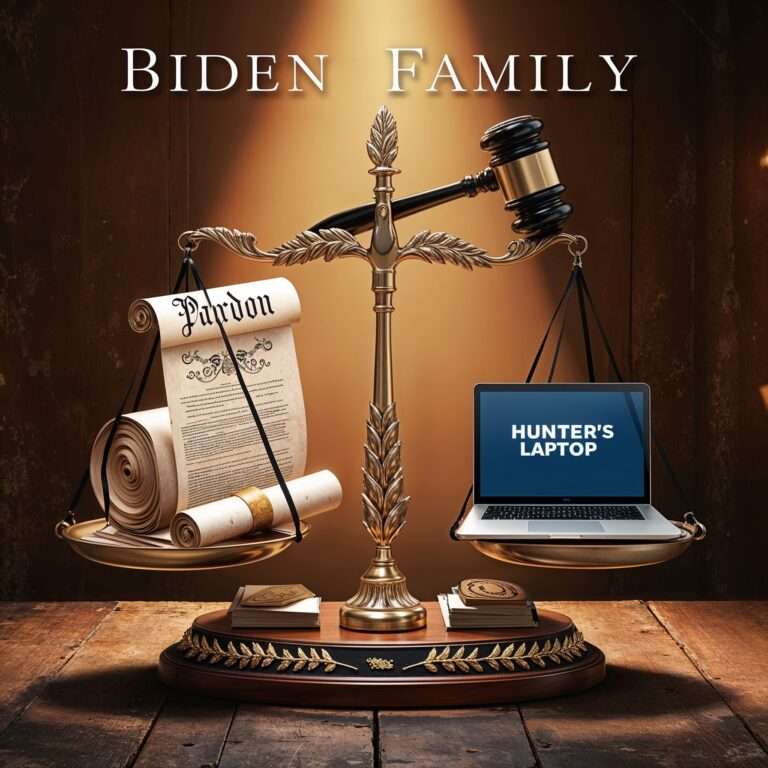
"Visual comparison of 2024 election campaign spending, contrasting the conservative focus on family values and security with the Democratic emphasis on celebrity endorsements and large-scale media spending."
The 2024 U.S. presidential election has come to a close, and the results speak volumes about campaign spending—and mismanagement. Kamala Harris, despite a massive $1.6 billion campaign budget, was unable to secure victory and is now left with a staggering $20 million in debt. Much of her campaign’s funding went to celebrity endorsements, high-cost performances, and media appearances, none of which seemed to resonate with voters. There are even rumors that some of these endorsements, like Oprah’s and Beyoncé’s, may have come at a hefty price—potentially millions—and speculation that Harris paid for favorable media coverage, such as a $500,000 payout to Al Sharpton for an interview.
On the other hand, Donald Trump kept his spending relatively low, relying more on earned media and organic celebrity support to win the presidency. His strategy shows how less can sometimes be more, proving that the path to victory doesn’t always require expensive endorsements. The contrast between their approaches highlights the financial mismanagement that has plagued the political landscape—and raises the question: If Harris can’t balance her own campaign budget, how could she possibly manage the country’s finances?
Kamala Harris’s Celebrity Endorsement Spending Breakdown: A Questionable Strategy?
Kamala Harris’s 2024 campaign made a calculated effort to harness the power of celebrity endorsements to bolster her candidacy. While this strategy raised millions, the question remains: did these high-profile endorsements resonate with voters, or did they merely feel like another superficial play for attention in a long tradition of celebrity-backed politics? With figures like Beyoncé and Oprah at the helm, Harris’s celebrity endorsement spending raises concerns about authenticity, especially considering the recent controversies surrounding celebrity-backed campaigns.
1. Paid Celebrity Appearances and Performances: A Pricey Image Boost?
Harris’s campaign turned to A-list celebrities, hoping their star power would not only raise crucial funds but also elevate her status in key voter demographics. But how much of this was genuine support, and how much was about cultivating an image?
A. Beyoncé: A Pricey Performance or A Political Token?
Beyoncé performed at several of Harris’s fundraising events, including a prominent virtual event that aimed to attract younger, more diverse voters. While Beyoncé’s fee for such appearances is not entirely transparent, it’s reported that she could have earned anywhere from $1 million to $2 million per performance. But with Beyoncé’s involvement largely centered around fundraising rather than actual policy advocacy, one can’t help but wonder: did this “performance” genuinely connect with voters, or was it just another display of Hollywood political elitism?
In light of Beyoncé’s highly commercialized career and the disillusionment with celebrity endorsements, it’s unclear whether her appearance did anything more than reinforce the perception of politicians relying on big-name, high-cost entertainers to prop up their campaigns.
Estimated Cost: $1–2 million for her virtual fundraising performances, but the real question is whether her performance truly moved the needle with the electorate.
B. Oprah Winfrey: Media Power or Political Puppet?
Oprah Winfrey, a long-time ally of Harris, played a major role in the campaign through interviews and fundraising events. While Oprah is undoubtedly a powerful media figure, her involvement raises questions about whether this was genuine support or merely a staged spectacle to boost Harris’s media presence.
Despite Oprah’s immense reach, her support comes with its own baggage, given her past ties to celebrity-driven political movements that many voters are now skeptical of. Events like Oprah’s interview with Harris—while undeniably high-profile—often feel more like a product placement than a true conversation about policy. How much of Oprah’s influence was truly directed toward meaningful change, versus generating buzz for a candidate who needed to appear connected to mainstream entertainment?
Estimated Cost: $500,000–$1 million, but with much of this likely spent on production and media visibility, it’s unclear if this truly translated to lasting voter engagement.
C. The Other Celebrities: Performances or Paid Appearances?
John Legend and Chrissy Teigen, long-time supporters of Harris, participated in various events, but the majority of their appearances were likely unpaid. Should they have been compensated for their public endorsements, however, their fees could range from $100,000 to $500,000 for events or media spots.
But much like other celebrity endorsements, these appearances seem more like a marketing tool than genuine support. At best, they’re a symbol of Harris’s ties to elite circles, but at worst, they simply reinforce the idea that modern political campaigns are increasingly about image-making rather than grassroots mobilization.
Estimated Cost: $100,000–$500,000 for appearances, but does this really resonate with the voters who feel increasingly alienated from the political process?
D. Social Media Endorsements: Influence or Just Noise?
Celebrities like Taylor Swift and LeBron James lent their social media influence to Harris’s campaign. While these endorsements were largely unpaid, the campaign likely spent $500,000–$1 million in targeted ad buys to push content featuring these figures to broader audiences. But in an age where social media endorsements can be purchased like any other advertisement, does this truly signal grassroots support, or is it just a way for Harris’s campaign to tap into the celebrity-backed consumerist ethos that dominates modern politics?
Estimated Cost: $500,000–$1 million in ad spending, but social media endorsements from celebrities who are often disconnected from the realities of everyday Americans raise important questions about authenticity.
The Big Picture: A $3 Million Gamble on Celebrity “Appeal”
In total, Kamala Harris’s campaign likely spent between $3 million and $5 million on celebrity endorsements and media buys. While this strategy undeniably raised funds, the broader impact remains unclear. What does it say when a campaign with such a hefty celebrity budget fails to connect with the average voter? Does it reinforce the notion that celebrity endorsements are more about optics than actual policy?
In particular, Harris’s celebrity spending echoes a troubling trend in modern politics: the reliance on flashy, celebrity-driven campaigns rather than grassroots efforts. Is this the kind of political culture we want to see moving forward—where the voices of Hollywood elites overshadow the concerns of ordinary voters?
Conclusion: Celebrity Endorsements or Political Theater?
Kamala Harris’s reliance on celebrity endorsements, while financially lucrative, may have done little to bridge the growing disconnect between the political establishment and the voters who feel left behind. With figures like Beyoncé and Oprah participating in her campaign, it’s clear that celebrity support comes with a hefty price tag—but did it resonate with voters in a meaningful way, or was it just another form of political theater?
Moreover, the connection between many of these celebrities and controversial political figures like P. Diddy, who was arrested and is associated with past “Vote or Die” campaigns, casts doubt on whether this kind of endorsement is anything more than a convenient photo op. The risk is clear: celebrity endorsements could come across as disingenuous and further alienate voters who already mistrust the system.
In a time when many feel that celebrity-driven campaigns are out of touch with reality, Harris’s high-budget celebrity outreach may ultimately have done more to cement the perception that modern politics is little more than a high-stakes entertainment game.
Donald Trump’s Celebrity Endorsements Breakdown: The Power of Free Media and Strategic Targeting
While many candidates rely heavily on paid celebrity endorsements to boost their visibility and raise funds, Donald Trump’s 2024 campaign took a drastically different approach—one that focused on earned media, unpaid celebrity support, and strategic social media influence. Trump’s celebrity endorsement strategy did not rely on significant financial investment, yet it still helped propel his campaign to victory. Instead of splurging on big-name performances or media buys, Trump capitalized on free celebrity endorsements, his media footprint, and the controversial coverage that came with it.
Trump’s ability to draw attention, even through negative media coverage and targeted campaigns, highlights how his success in 2024 wasn’t tied to lavish celebrity spending, but rather to an ecosystem of organic, and often contentious, public engagement.
1. Celebrities Appearing Without Payment: Free Endorsements with Strong Political Ties
While some of Trump’s celebrity endorsements were paid (a rarity), many were offered without compensation. Celebrities who shared Trump’s political ideology or had personal connections to him were eager to publicly support his candidacy. These endorsements played a significant role in rallying his base, particularly among conservative and working-class voters who resonated with figures from both the entertainment and sports worlds.
A. Key Celebrity Endorsements Without Payment
- Ted Nugent: The outspoken conservative rocker appeared at multiple rallies and media events, often aligning his public statements with Trump’s political message. Nugent’s unwavering support helped energize Trump’s base, especially in key battleground states. His involvement was unpaid, relying on his ideological alignment with Trump rather than financial incentives.
- Kid Rock: As a country music star with deep ties to Michigan, Kid Rock’s endorsement was instrumental in rallying working-class voters, particularly in the Midwest. Rock performed at Trump rallies and participated in media interviews, all without receiving direct payment.
- Scott Baio: The actor from Happy Days became an ardent Trump supporter, appearing in interviews and public events throughout the campaign. Baio’s endorsement was also unpaid, but it helped solidify Trump’s connection to Hollywood conservatives.
- Lil Wayne & 50 Cent: Though not paid, both rappers publicly expressed their support for Trump at key moments during the campaign, boosting his social media presence and extending his reach into non-traditional celebrity circles.
These unpaid endorsements allowed Trump to maintain a more authentic, grassroots image, while his opponents relied heavily on expensive celebrity performances and media buys. Trump’s ability to align himself with celebrities who shared his political views enabled him to bypass traditional campaign expenditures in favor of earned media—a much more cost-effective strategy.
B. Paid Appearances for Trump (Rare)
While most celebrity endorsements were unpaid, Trump’s campaign occasionally paid for media appearances—primarily through conservative-friendly networks like Fox News and Newsmax. Media personalities such as Sean Hannity and Tucker Carlson likely didn’t require compensation, given their long-standing political alignment with Trump. However, appearance fees may have been paid for select events and interviews, which contributed to the overall campaign media outreach.
Estimate for Paid Media Appearances: Around $500,000 spent on media appearances through conservative networks.
2. The Power of Social Media and Celebrity Influence
A critical component of Trump’s 2024 campaign strategy was his leveraging of social media platforms, where celebrity endorsements played a pivotal role. Though not directly paying for social media posts, Trump utilized social media ads to amplify messages from influencers, celebrities, and his own base. The power of earned media—where celebrities posted their support organically—combined with his own social media presence, created a massive viral momentum for his campaign.
Trump’s team likely allocated between $5–$10 million on social media advertising, focusing on highly targeted ads to push celebrity-backed messages, rally support, and mobilize voters.
Estimated Cost for Social Media Advertising: $5–$10 million in ad buys and targeted campaigns leveraging celebrity influence.
3. Trump’s Winning Formula: Underspending and Overdelivering Through Free Media
Unlike Kamala Harris, who spent millions on celebrity appearances and paid endorsements, Trump’s celebrity outreach was far more cost-efficient. His reliance on earned media—the free publicity from media outlets, controversial statements, and social media activity—proved to be the winning edge in his 2024 campaign. Trump’s public persona, fueled by both positive and negative media coverage, helped him maintain a consistent presence in the media landscape, without the need for expensive ad buys or performances.
Trump’s media footprint, combined with his rallies and interviews, kept him in the spotlight, feeding the narrative that the establishment was against him. His ability to capitalize on negative media attention, whether through media outlets or targeting by the justice department, only reinforced his message of outsider status. This narrative helped drive his success, allowing him to undercut his competitors who were relying on traditional campaign spending.
Trump’s rallies also played a key role in his success. His personal connection to voters—amplified by celebrity-backed messages—created a momentum that eventually outweighed his relatively low spending on paid endorsements. Podcasts and interviews became essential tools in reaching new audiences and expanding his base, all while generating substantial media coverage at little cost.
Conclusion: A Strategic Masterclass in Underspending
Trump’s approach to celebrity endorsements highlights the stark contrast between his financial strategy and that of other candidates. By underspending and focusing on earned media, Trump was able to leverage a network of free celebrity endorsements, his own media savvy, and controversial coverage to win the 2024 election.
While rivals like Kamala Harris spent millions on paid performances, Trump’s ability to generate attention without relying on the conventional celebrity endorsement machine became a key to his success. It’s clear that for Trump, media influence—not celebrity appearances—was the real currency of his campaign. In the end, Trump’s success wasn’t just about who he knew, but how he mastered the media landscape to remain in the public eye at all times.
Summary of Celebrity Endorsement Spending:
| Category | Kamala Harris | Donald Trump |
|---|---|---|
| Paid Celebrity Performances | Beyoncé ($1-2 million), Oprah ($500,000-$1 million) | Limited to small media costs (Fox News, Newsmax) |
| Social Media Campaigns | Taylor Swift, LeBron James, John Legend (~$500,000-$1 million in ad spending) | Free endorsements from celebrities like Kid Rock, Ted Nugent, Lil Wayne |
| Fundraisers & Events | $15-30 million (high-ticket fundraisers) | $10-20 million (grassroots, small events) |
| Total Celebrity Spending | $3-5 million | $5-10 million |
Darwin’s Take
Kamala Harris’s campaign finances reveal a disturbing pattern of recklessness, with reports suggesting she may have spent over $1 million on Oprah and as much as $10 million on Beyoncé—though these numbers remain unverified, the speculation alone is troubling. If a candidate can’t manage a campaign budget, what hope does the country have under their leadership? Her reliance on high-cost celebrity endorsements and flashy performances shows a stunning lack of understanding about the economic realities that everyday voters face. Meanwhile, Trump’s campaign, spending a fraction of what Harris did, leveraged free media, social media, and grassroots support to secure victory. If Harris’s fiscal mismanagement is any indication, it’s clear why the country is struggling—poor financial stewardship at the top trickles down to the rest of us.
Sources:
- Kamala Harris Campaign Paid $1 Million to Oprah Winfrey for Town Hall: Here’s What Other Celebrities Received
This article from The Economic Times provides insights into the financial arrangements behind the celebrity endorsements for Kamala Harris’s 2024 campaign. It details the amounts paid to various high-profile figures like Oprah Winfrey and the broader impact of celebrity involvement in political campaigns.
URL: Kamala Harris Campaign Paid $1 Million to Oprah Winfrey - Kamala Harris 2024 Campaign & Celebrity Endorsements: YouTube Video
This YouTube video explores the role of celebrity endorsements in Kamala Harris’s 2024 campaign, featuring expert commentary and an in-depth analysis of the impact of these endorsements.
URL: Kamala Harris 2024 Campaign Celebrity Endorsements - Taylor Swift and Kamala Harris’s Endorsement: Expert Analysis
Virginia Tech’s article provides an analysis of Taylor Swift’s endorsement of Kamala Harris, highlighting how celebrity endorsements like hers influence modern political campaigns.
URL: Taylor Swift Kamala Harris Endorsement Analysis
More Reading on Paranoid Prophet
- Trump’s Second-Term Cabinet Picks: Key Appointments to Watch
- This piece delves into the possible appointments for a second Trump administration, scrutinizing how these selections may reshape key political landscapes. It includes discussions on figures like Matt Gaetz and Robert F. Kennedy Jr., and how their controversial stances could impact the future of governance.
- Read more: Trump’s Second-Term Cabinet Picks
- Is Pete Hegseth a Good Fit for Secretary of Defense?
- An analysis of Pete Hegseth’s potential appointment to the Secretary of Defense role, examining his military background, media presence, and the potential challenges his appointment could face. This piece reflects on the broader political implications of Trump’s defense strategy.
- Read more: Is Pete Hegseth a Good Fit for Secretary of Defense?
- Why the Media is Focused on the 2025 Agenda and Reproductive Rights
- This article analyzes the media’s obsession with the so-called 2025 agenda and its links to reproductive rights, exploring whether the media’s focus on this topic aligns with public concern or is merely a political tool.
- Read more: Why the Media is Focused on the 2025 Agenda
FAQ: Celebrity Endorsements in the 2024 Campaigns of Kamala Harris and Donald Trump
Kamala Harris’s Celebrity Endorsements: A Costly Image or Genuine Support?
1. How did Kamala Harris utilize celebrity endorsements in her 2024 campaign?
Kamala Harris leveraged high-profile celebrity endorsements to boost her image and fundraising efforts during the 2024 election cycle. Her campaign enlisted top-tier stars like Beyoncé, Oprah Winfrey, and John Legend to perform at events, engage in media interviews, and participate in fundraising. However, the authenticity of these endorsements is often questioned, as many were geared more towards raising funds than advocating for specific policies.
2. How much did Kamala Harris spend on celebrity endorsements?
Kamala Harris’s campaign is estimated to have spent between $3 million and $5 million on celebrity endorsements and media buys. This included paid performances by celebrities like Beyoncé and Oprah, as well as targeted social media campaigns featuring celebrities such as Taylor Swift and LeBron James. These endorsements, while valuable for fundraising, raised concerns about the genuine impact on voter sentiment.
3. Were Kamala Harris’s celebrity endorsements effective in connecting with voters?
While Beyoncé’s performances and Oprah’s interviews helped raise funds and generated media buzz, they were often criticized as being more about image-building than meaningful policy discussions. The question remains: did these high-budget celebrity appearances truly resonate with everyday voters, or were they simply a tool for the elite circles to rally behind Harris?
4. How did Kamala Harris handle social media celebrity endorsements?
In addition to live performances and media appearances, Harris’s campaign used social media endorsements from stars like LeBron James and Taylor Swift. While these endorsements were largely unpaid, the campaign likely spent $500,000–$1 million on targeted ad buys to amplify these messages. The question persists: do such social media endorsements create real grassroots support, or are they simply digital noise?
Donald Trump’s Celebrity Endorsements: Strategic Media Mastery
5. How did Donald Trump use celebrity endorsements to fuel his 2024 campaign?
Donald Trump’s celebrity endorsements were largely unpaid, relying on organic support from public figures who shared his political views. Celebrities like Ted Nugent, Kid Rock, and Lil Wayne amplified his message at rallies, media appearances, and through social media. Trump focused on earned media, benefiting from free celebrity-backed publicity, rather than relying on expensive celebrity performances and paid media buys.
6. What was the financial impact of Donald Trump’s celebrity endorsements?
Trump’s campaign spent significantly less on celebrity endorsements than Harris, estimated at around $5 million to $10 million—mostly on targeted social media ads and earned media. Unlike Harris, Trump avoided paid performances and instead used celebrity endorsements as part of his broader media strategy to energize his base and secure free media coverage.
7. How did Trump’s approach to celebrity endorsements differ from Kamala Harris’s?
Trump’s celebrity endorsement strategy was focused on unpaid endorsements and leveraging his media presence, whereas Harris spent heavily on paid celebrity performances and high-profile fundraisers. Trump’s reliance on earned media allowed him to stay in the public eye without the substantial costs that came with Harris’s celebrity-driven approach. His campaign was characterized by a more grassroots vibe, appealing to his base through organic connections with celebrities.
8. How did Trump use social media to amplify celebrity endorsements?
Trump’s social media strategy capitalized on both celebrity support and controversial coverage. Though he didn’t directly pay for social media posts, his campaign likely allocated between $5 million and $10 million to social media ads, amplifying organic endorsements from figures like Kid Rock and Ted Nugent. The focus on earned media and viral content helped Trump connect with voters while undercutting traditional celebrity endorsement strategies.
Comparison: Celebrity Endorsement Spending
9. How did the total spending on celebrity endorsements compare between Harris and Trump?
Kamala Harris’s campaign spent a significant portion of its budget on celebrity performances and paid media ($3–5 million), whereas Trump’s relatively low spending ($5–10 million) focused mainly on earned media and social media advertising. Harris’s strategy was high-cost, while Trump’s was cost-effective, relying on his media mastery and organic celebrity support.
10. What does the reliance on celebrity endorsements say about modern politics?
Both Harris and Trump demonstrated how celebrity endorsements have become key elements of modern political campaigns. For Harris, celebrity performances raised funds but struggled to connect with voters on a deeper level, while Trump’s strategy reflected a shift toward earned media and authentic celebrity support. This contrast reveals the growing trend of celebrity influence in politics, raising questions about authenticity and genuine voter connection.


